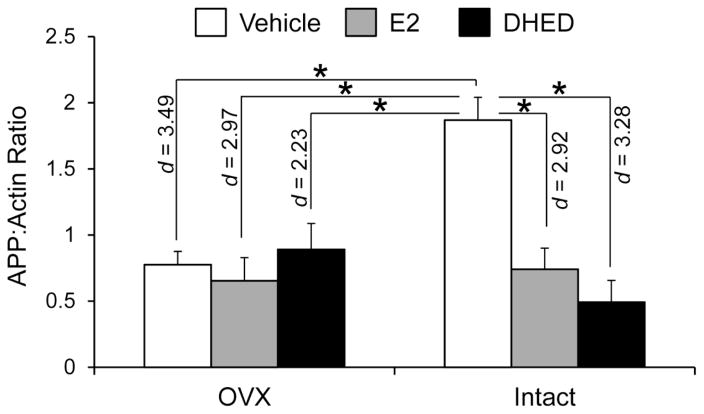Fig. 2.
APP (6E10) protein levels. Protein levels expressed as APP to β-actin ratios ± SEM (n = 5–7/group). Statistically significant main effects of treatment (F(2,29)=8.82; p=0.001; ηp2=0.378) and ovarian status (F(1,29)=4.77; p=0.037; ηp2=0.141), as well as significant treatment × ovarian status interaction (F(2,29)=9.45; p=0.001; ηp2=0.394) were shown in DTG females by factorial analysis. By Tukey’s HSD test, following groups showed statistically significant differences, as shown here in Fig. 2 (Effect sizes were indicated by Cohen’s d values): E2 and DHED treatments significantly decreased APP in both OVX and intact mice compared to vehicle-treated intact animals. Also, there was a significant decrease of APP levels in vehicle-treated OVX mice compared to the vehicle-treated intact group. Therefore, E2-treated and DHED-treated OVX animals did not show statistically significant difference compared to the vehicle-treated OVX mice. *p < 0.05

